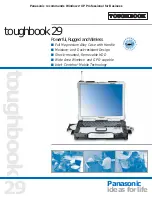
Quick Test mode: The charger will analyze the dynamic internal battery resistance by applying a load and the current reading is referred to the
voltage drop detected on the battery. Within 10s, the tested battery resistance will be displayed in the unit of milliohm. For good quality batteries,
the internal resistance is very low: in the range of 20 ~ 80 milliohms. If battery internal resistance is over 500milliohms, then these batteries are not
good for supplying power to high current loads, such as digital camera etc. But they can still be used for low energy loads, such as clock, remote
controllers etc. Always use batteries with close internal resistance range when they are used in serial to achieve maximum battery life. Alkaline
and any other 1.5v batteries can be tested on this charger as well. If a completely empty battery is to be tested, it is not possible to give any correct
reading. Please be noted that since the internal battery resistance can be very small, and contact resistance can be a major influence factor, thus
same battery tested in different slot or even at the same slot with different contact condition, the reading can be varied for 10% to 20%. This is
normal. Test twice if needed to assure a correct measurement result. Due to the construction reason, there is around 30milliohm contact resistance
from the charger itself, and this resistance is calculated together with battery internal resistance. It should be deducted from the reading to get a
more accurate battery resistance reading.
When a high impedance battery( eg. Over 2500milli ohm) is loaded onto the charger, due to its high internal impedance, real displayed charging
current can be much less than your pre-selected charging current. When this happened, it doesn’t means the charger is defective. Eventually it
needs longer charging time until fully charged.
8.2 Display
Charge/Discharge Current: instantaneous current is displayed.
Time Elapsed: The charging/discharging time of the last cycle is displayed.
Accumulated Capacity: The accumulated battery capacity is displayed in mAh. For discharge mode, it is referring to the accumulated energy
discharged from that battery. For refresh mode, previous charging capacity is displayed even when current working stage is at discharge cycle.
Battery Voltage: The instantaneous battery voltage is displayed.
At QUICK TEST mode, it shows the internal battery resistance in mili- ohm(0.001R).
Full: After the rechargeable battery is fully charged in any of the operation modes, trickle charging will be started automatically. Trickle charging
prevents the rechargeable batteries from being overcharged and compensates for self-discharging of the batteries
9.
Maintenance
The device is maintenance-free but should be cleaned occasionally. When cleaning, the device must be removed from any power source. Only use dry and
soft cloth to clear the housing of the charger. Do not use abrasive or solvents.
10. Disposal
10.1 Disposal of waste electrical and electronic equipment
In order to preserve, protect and improve the quality of environment, protect human health and utilize natural resources prudently and rationally, the user
should return unserviceable product to relevant facilities in accordance with statutory regulations.
The crossed-out wheeled bin indicates the product needs to be disposed separately and not as municipal waste.
10.2 Used batteries/rechargeable batteries disposal
The user is legally obliged (battery regulation) to return used batteries and rechargeable batteries. Disposing used batteries in the household waste is
prohibited! Batteries/rechargeable batteries containing hazardous substances are marked with the crossed-out wheeled bin. The symbol indicates that the
product is forbidden to be disposed via the domestic refuse. The chemical symbols for the respective hazardous substances are Cd= Cadmium, Hg =
Mercury, Pb = Lead.
You can return used batteries/rechargeable batteries free of charge to any collecting point of your local authority.























